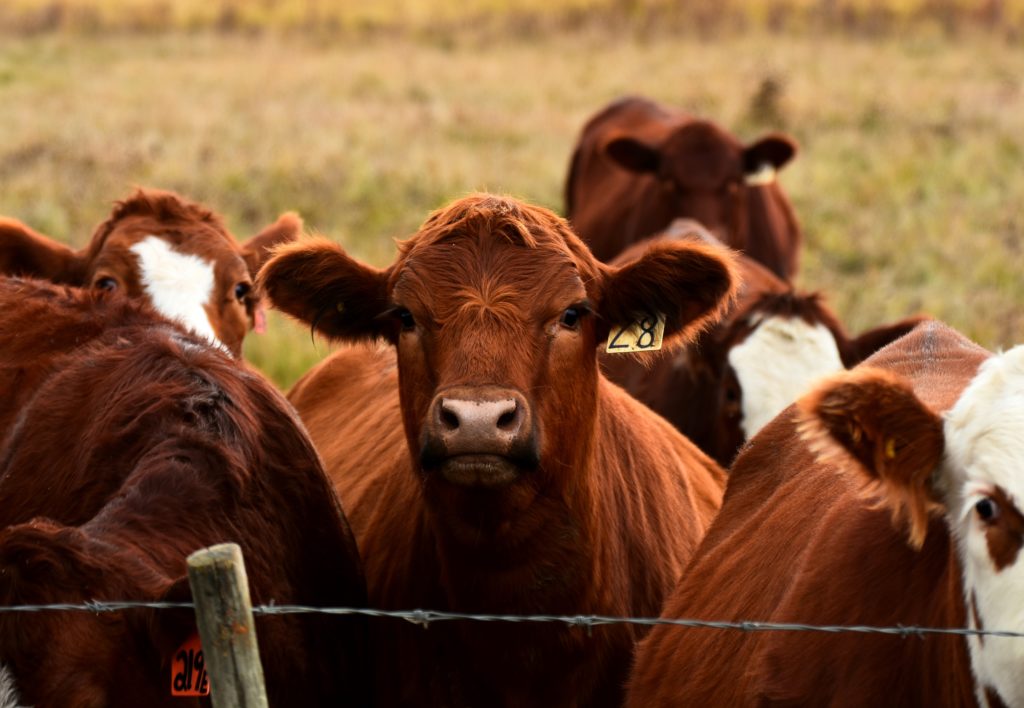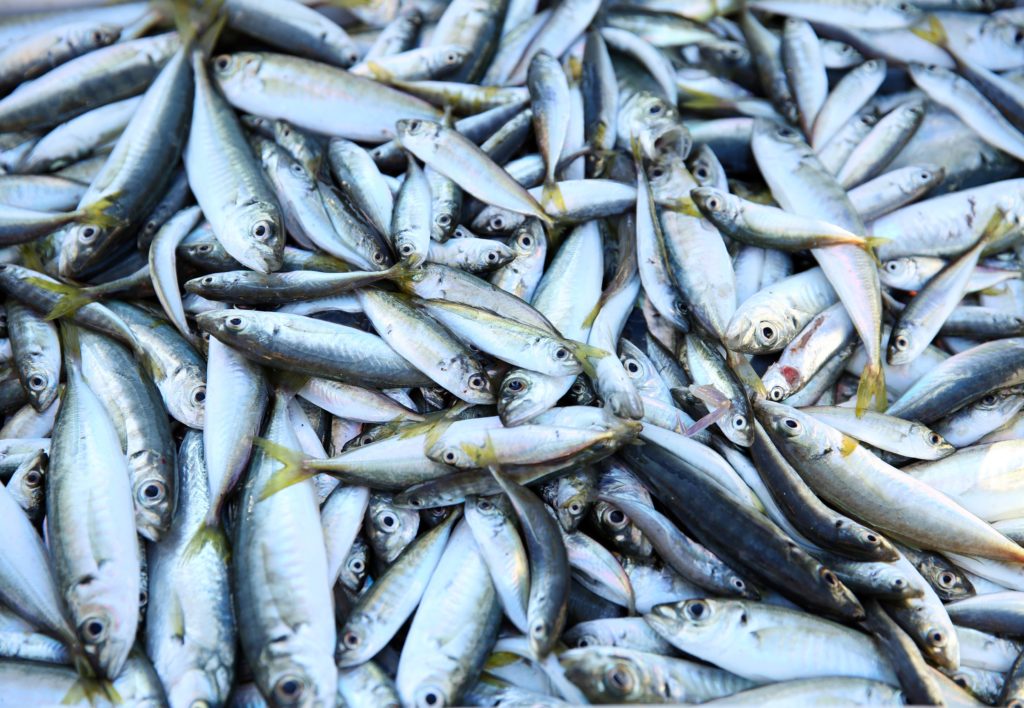Country of Origin Labeling
USDA Country of Origin Labeling (COOL)
Country of Origin Labeling
The USDA's Country of Origin Labeling (COOL) laws and regulations are designed to provide consumers with information about where their food comes from. These laws require certain food products to be labeled with information about the country of origin, providing transparency and allowing consumers to make informed decisions about the foods they buy. The regulations apply to a variety of food products, including meat, poultry, fish, fruits, vegetables, and nuts. Compliance with these regulations can be complex and challenging, but it is essential for businesses to avoid penalties and ensure consumer confidence in their products. In this context, understanding the rules and regulations of USDA COOL is critical for those involved in agriculture and trade. This web page provides comprehensive resources to help navigate the complexities of COOL laws and regulations, and stay up-to-date on the latest developments in this field.
Country of Origin Labeling (COOL) of the United States Department of Agriculture (USDA) is a mandatory labeling law that requires retailers, such as full-line grocery stores, supermarkets and club warehouse stores, to notify their customers with information regarding the source of certain foods. Food products covered by the law include muscle cut and ground meats: lamb, goat, and chicken; wild and farm-raised fish and shellfish; fresh and frozen fruits and vegetables; peanuts, pecans, and macadamia nuts; and ginseng. Agriculture Marketing Service (AMS) of the USDA is responsible for the administration and enforcement of COOL.
Compliance and Enforcement
Retailers in physical (bricks and mortar) locations and those who sell remotely (such as online), are required to identify the country of origin on covered foods using a label, stamp, mark, placard or other clear and visible sign on the covered commodity or on the package, display, holding unit, or bin containing the commodity at the final point of sale to consumers.
This information may be typed, printed or handwritten provided it is in conformance with other Federal labeling laws and does not obscure other labeling information required by Federal regulation. The information may be combined or listed separately but must be placed in a conspicuous location, so as to render it likely to be read and understood by a customer under normal conditions of purchase. Food service establishments, such as restaurants, cafeterias, food stands, and other similar facilities are exempt from these labeling requirements.
In-Depth Coverage: USDA-Regulated Products
- Importing USDA-Regulated Food Products
- Import Regulation by USDA Agricultural Marketing Service (AMS)
- Food Products – FDA or USDA Regulated
- Country of Origin Labeling
- Importing Animals, Animal Products, and Biologics into the US
- Importing Meat, Poultry, and Egg Products into the US
- Labeling and Marking of Imported Meat, Poultry, and Egg Products
- USDA National Organic Program (NOP)
- Agricultural Safeguards and USDA Licensing
Any person engaged in the business of supplying a covered commodity to a retailer, whether directly or indirectly, must make available information to the retailer or buyer about the country(ies) of origin and method of production (wild and/or farm-raised), if applicable, of the covered commodity. This information may be provided either on the product itself, on the master shipping container, or in a document that accompanies the product through retail sale provided that the document identifies the covered commodity and its country(ies) of origin and method of production, if applicable.
The regulation gives the Secretary of Agriculture and USDA the authority to conduct an audit of any person that prepares, stores, handles, or distributes a covered commodity for retail sale to verify compliance.
During FY 2016, the most frequent non‐compliance (NC) code cited was for absence of country of origin (COO; 64%) followed by inaccurate COO (11%) and absence of method of production (MOP; 10%)
In-Depth Coverage: Marketing and Advertising Compliance
- Federal Trade Commission (FTC) Advertising Rules
- Made in USA Standard
- FTC Regulation on Environmental Claims
- Adverting and Marketing on the Internet
- Label Claims for Conventional Foods and Dietary Supplements
- Dietary Supplement Advertising: What is FTC's Truth-in-Advertising Law?
- USDA Country of Origin Labeling (COOL)
- FTC Rules & Regulations on Food Advertisement
Frequently Asked Questions
What stores are required to comply with COOL?
The COOL legislation defines “retailer” as subject to the licensing requirements of the Perishable Agricultural Commodities Act of 1930 (PACA). The term perishable agricultural commodity means fresh and frozen fruits and vegetables. As defined by PACA, a retailer is any person engaged in the business of selling any perishable agricultural commodity at retail. Retailers are required to get a PACA license when they purchase more than $230,000 of fresh or frozen produce a calendar year.
For purposes of COOL, the definition of “retailer” generally includes most grocery stores and supermarkets. Retail firms such as fish markets and butcher shops, as well as small stores that do not sale the threshold amount of fresh produce, are exempt from country of origin labeling requirements. Restaurants and other food service establishments (cafeterias, lunchrooms, institutions, etc.) are also exempt.
In-Depth Coverage: Importing Medical Device
How does a retailer convey COOL information to consumers? Is there a required font size, color, or location required to print COOL information?
The COOL rule does not stipulate the exact size or placement of COOL declarations, only that the statements be “legible and placed in a conspicuous location where they are likely to be read and understood by a customer.” The rule provides various options for presenting country of origin declarations at retail sale. COOL statements can be placed on a placard, sign, label, sticker, band, twist tie, pin tag, or other format that allows consumers to identify the country of origin of the product.
Processed foods are excluded from COOL requirements. How is a processed food defined?
A processed food item is defined as a covered commodity that has undergone specific processing resulting in a change in the character of the covered commodity, or that has been combined with at least one other covered commodity or other substantive food component. Specific processing that results in a change in the character of the covered commodity includes cooking (e.g., frying, broiling, grilling, boiling, steaming, baking, roasting), curing (e.g., salt curing, sugar curing, drying), smoking (hot or cold), and restructuring (e.g., emulsifying and extruding).
What activities do not change the character of commodity into a processed food item?
Trimming, cutting, chopping, and slicing are activities that do not change the character of the product. Likewise, preparation steps for fruits, vegetables, and nuts such as blanching (steam or oil), dicing, removal of seed (pit, stem, calyx, husk, pods, rind, skin, peel, etc.), polishing, waxing, adding sugar, and adding ascorbic acid (to retard oxidation) do not change the character of commodity into a processed food item. Dried fruit is not subject to COOL labeling requirements since the drying process is considered curing that changes the character of the fruit.
Are marinated meats considered to be “processed foods?”
The addition of a component (such as water, salt, or sugar) that enhances or adds an additional step in the preparation of the product would not in itself result in a processed food item. These additional steps do not fundamentally alter the name or use of the product by the consumer. For example, dextrose is a sugar. Phosphate is a salt. Chicken stock and yeast are flavor enhancers. Rosemary is an enhancer when it is added to meats for color preservation. In addition, enhancement with enzymatic tenderizers, such as ficin and bromelain, do not by themselves result in a processed food item. Meat products that have been tenderized using papain or other similar additive are not considered processed food items.
Likewise, meat products that have been injected with sodium phosphate or other similar solution are also not considered processed food items as the solution has not changed the name or character of the covered commodity. Such solutions and marinades intended to improve flavor, color and juiciness are considered enhancements to an existing commodity. In contrast, meat products that have been marinated with additional food components that result in a new flavor such as Lemon-Pepper, Barbeque or Cajun have been changed in both name and character and thus are considered processed food items.
In-Depth Coverage: Importing Food Products
- What is FDA Food Safety Modernization Act (FSMA)?
- Prior Notice of Imported Foods
- FDA Food Facility Registration
- Risk-Based Preventive Controls for Human Food
- Risk-Based Preventive Control for Animal Food
- Protect Food against Intentional Adulteration
- What is Foreign Supplier Verification Program (FSVP)?
- What is FSMA Produce Safety Rule?
Can raw materials from more than one country be commingled in a package or bulk display?
The regulation does allow for comingling of product (with the exception of meat muscle cuts) in consumer packages or retail bins as long as all possible countries of origin are listed. If the package or display contains product of multiple countries, then all countries must be on the label, for example: “Product of Mexico and Chile.” The order of the country names does not matter. Punctuation and the word “and” may be omitted.
How should muscle cuts of meats derived from animals slaughtered in the U.S. be labeled with production steps?
The rule requires muscle cuts of meat derived from animals harvested in the United States to include specific information regarding where animals were born, raised, and slaughtered. The “U.S.” label will state: “Born, Raised, and Slaughtered in the United States.” For meat derived from animals born outside the United States, one type of label could state: “Born in Mexico, Raised and Slaughtered in the United States.” For meat derived from animals imported into the United States for immediate slaughter, one type of label could state: “Born and Raised in Canada, Slaughtered in the United States.”
In-Depth Coverage: Country of Origin
- Country of Origin of Imported Merchandise
- Customs Ruling: Country of Origin
- Country of Origin: Food Products
- Country of Origin: Chemical and Pharmaceutical Products
- Country of Origin & Country of Manufacture: CBP vs. FDA
- Country of Origin: Substantial Transformation or Country of Assembly Test
- Country of Origin and Free Trade Agreement
- Country of Origin and Section 301
Quick Link To U.S. Customs & Import Requirements
Guidance on customs & logistics solution for traditional and e-commerce importers and exporters
Importer Security Filing (ISF)
An ISF is required when cargo (ocean only) laden on vessel at a foreign port is destined for shipment to the U.S. Under ISF rule, some importing information and idetails regarding cargo must be transmitted to the CBP at least 24 hours before goods are loaded onto the vessel.
Customs Clearance
The goods imported into the U.S. are required to be declared to CBP. Our customs broker will help you stay in compliance with customs laws and regulations and clear your goods quickly and efficiently with our electronic Automated Commercial Environment (ACE) and Automated Broker Interface (ABI) Single Window System.
Freight Forwarding
Looking for a freight forwarding partner? To move your cargo from its current location through customs to its final destination we will partner with you to find the best way for your business. Whatever your transportation, logistics or customs clearance needs, we will do our best to customize a solution for your needs.
Warehousing & Distribution
Our warehouse facility offers great potential for serving as a regional hub with over 145,000 SF storage capacity close to Los Angeles Airport & Los Angeles/Long Beach Sea port. With our extensive experience in freight services, your import/export cargo will be handled quickly and effectively.
Section 321 Entry
Section 321 Entry allows importing free of duty and tax for shipments imported by one person on one day having a fair retail value in the country of shipment not more than $800. We provide our resident and non-resident clients with dedicated ACE eManifest solutions for Section 321 entry of all modes of transportation.
Non-resident Importer Program
If you want to sell your products in U.S. marketplaces, but you are a business owner located outside of the U.S. and do not have an entity or presence in the U.S., you need to be established as a Foreign Importer of Record before your products can be imported into the U.S. We can help you.
E-Commerce
The Internet has made it easy to find and purchase items from almost anywhere in the world. Our e-commerce experts will help you find the right solution for your international transportation, customs clearance, and delivery to your final destination. We also provide value-added repackaging, warehousing and distribution services.
Customs Clearance and Import Requirements
- Entry of Imported Merchandise
- What is Section 321 Entry?
- What is Automated Commercial Environment (ACE)
- What is an Automated Broker Interface (ABI)?
- Who is Ultimate Consignee?
- What is Non-Resident Importer Program?
- Country of Origin of Imported Merchandise
- What is the Country of Assembly?
- What is the FDA's Country of Manufacture?
- Marking of Country of Origin on U.S. Imports
- What is Customs Bond?
- Reconciliation Prototype and Bond Rider
- Who Needs a Customs Broker?
- What is Customs Ruling Program?
- Classification of Imported Goods
- How is imported merchandise appraised?
- What are Import Quotas?
- What are Trade Remedy Duties?
- Antidumping Duty (AD) and Countervailing Duty (CVD)
- What is Foreign Trade Zone (FTZ)?
- What is Importer Security Filing (ISF)?
- What is Temporary Importation under Bond (TIB)
- What is In-Bond Process?
FDA-Regulated Products and Import Requirements
- What is Food Safety Modernization Act (FSMA)?
- Prior Notice of Imported Foods
- Food Facility Registration
- Risk-Based Preventive Controls for Human Food
- Risk-Based Preventive Control for Animal Food
- Standards for the Growing, Harvesting, Packing, and Holding of Produce for Human Consumption
- What is Foreign Supplier Verification Program (FSVP)?
- Protect Food against Intentional Adulteration
- FDA Regulated Product in Foreign Trade Zone (FTZ)
- Entry Review Process for FDA Regulated Products
- Country of Origin VS Country of Manufacture
- Foods Regulated by FDA or USDA: What is the Difference?
- Label and Labeling Claims for Conventional Food and Dietary Supplements
- What is USDA Country of Origin Labeling (COOL)?
- Import for Export of FDA Regulated Products
- FDA Regulated Products in Personal Baggage or Sending by Mail or Courier
- International Mail Facility (IMF) and FDA Regulation
- Importing Biological Product Regulated by CBER
- Importing Cosmetics and Voluntary Cosmetic Registration Program (VCRP)
- Importing Drugs into the U.S.
- Importing OTC Drugs into the U.S.
- Importing Veterinary Drugs into the U.S.
- Importing Tobacco Products into the U.S.
- Importing Medical Devices into the U.S
- Importing Food Products into he U.S.
- Importing Radiation-Emitting Products into the U.S.



















